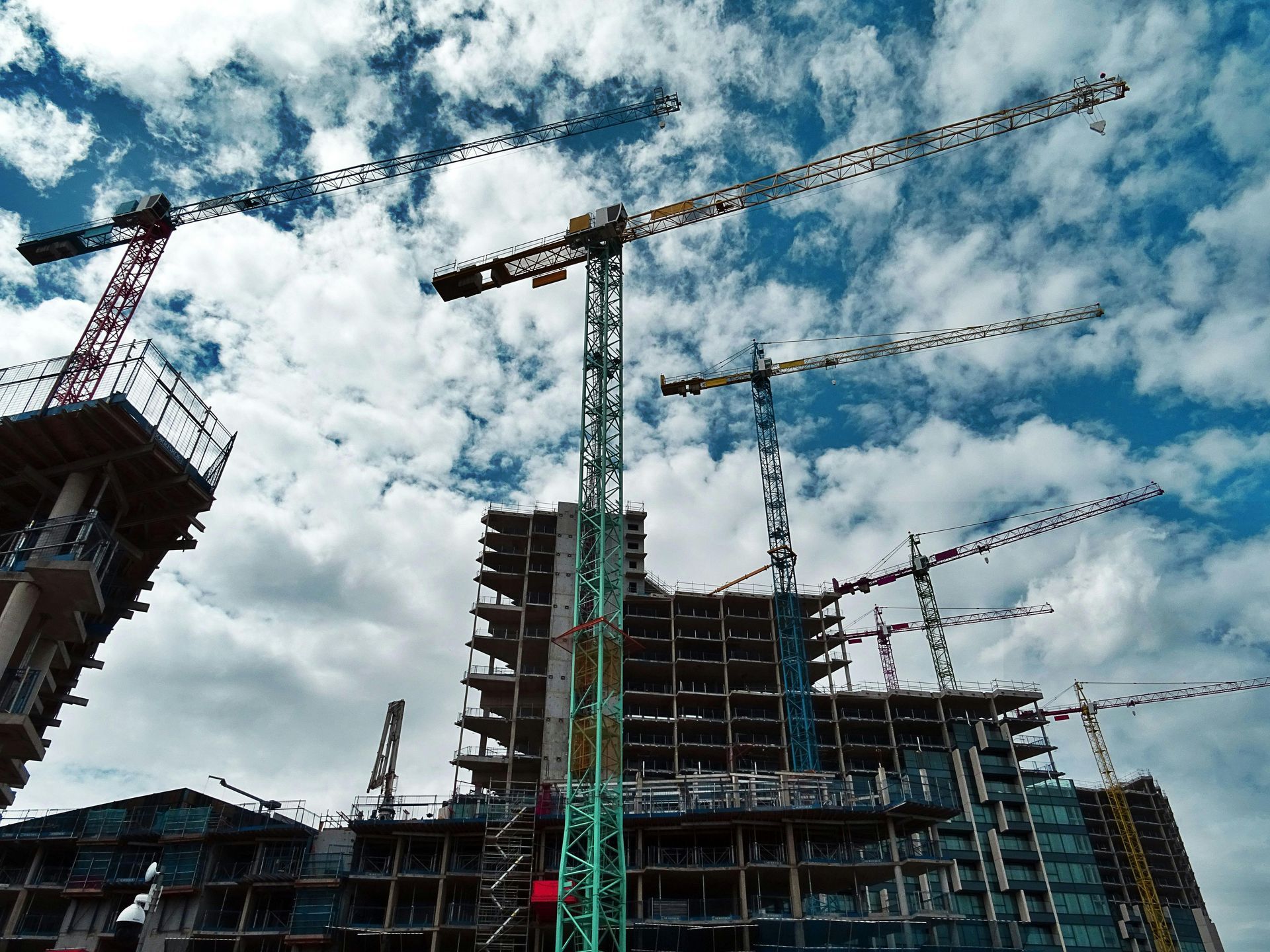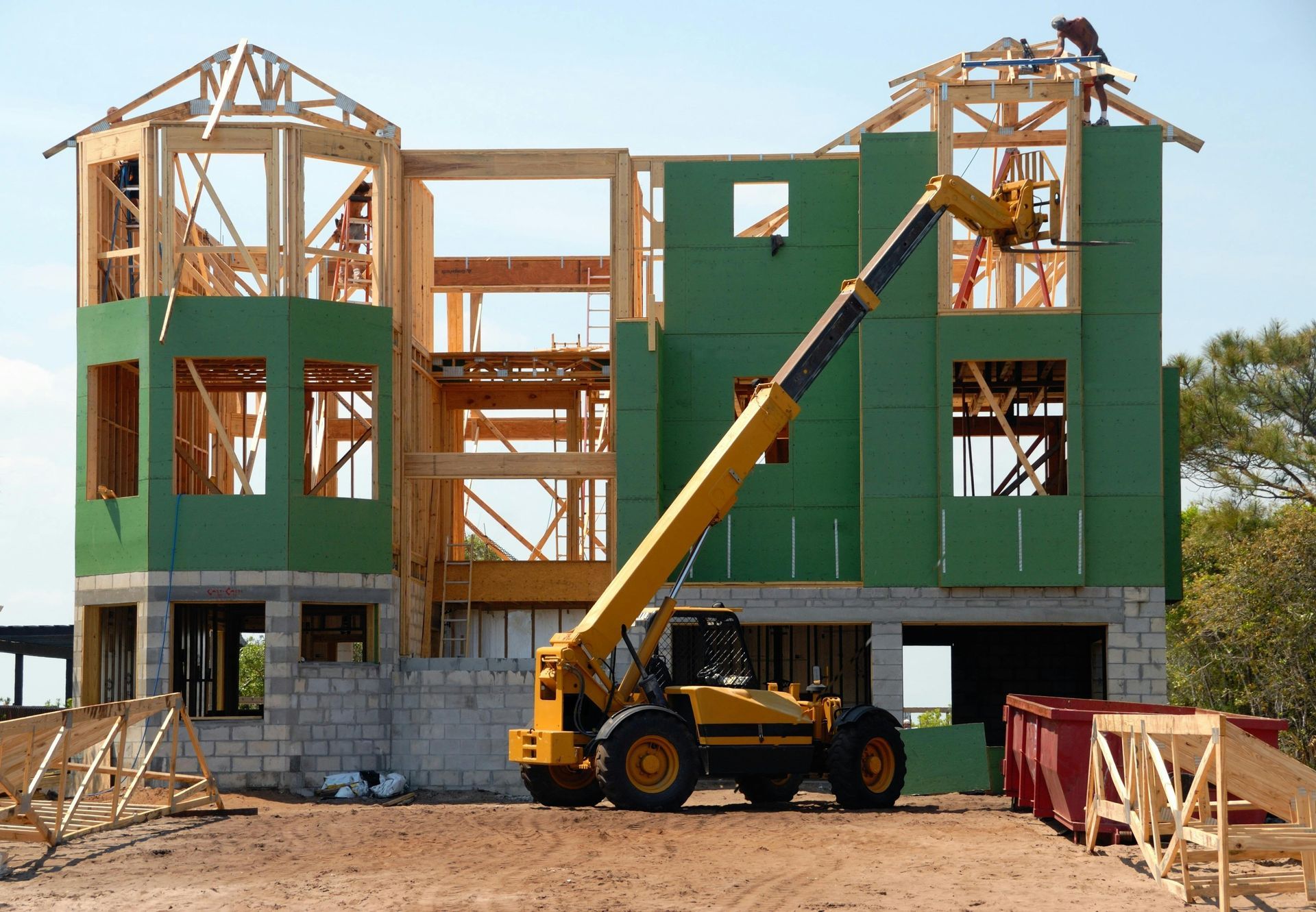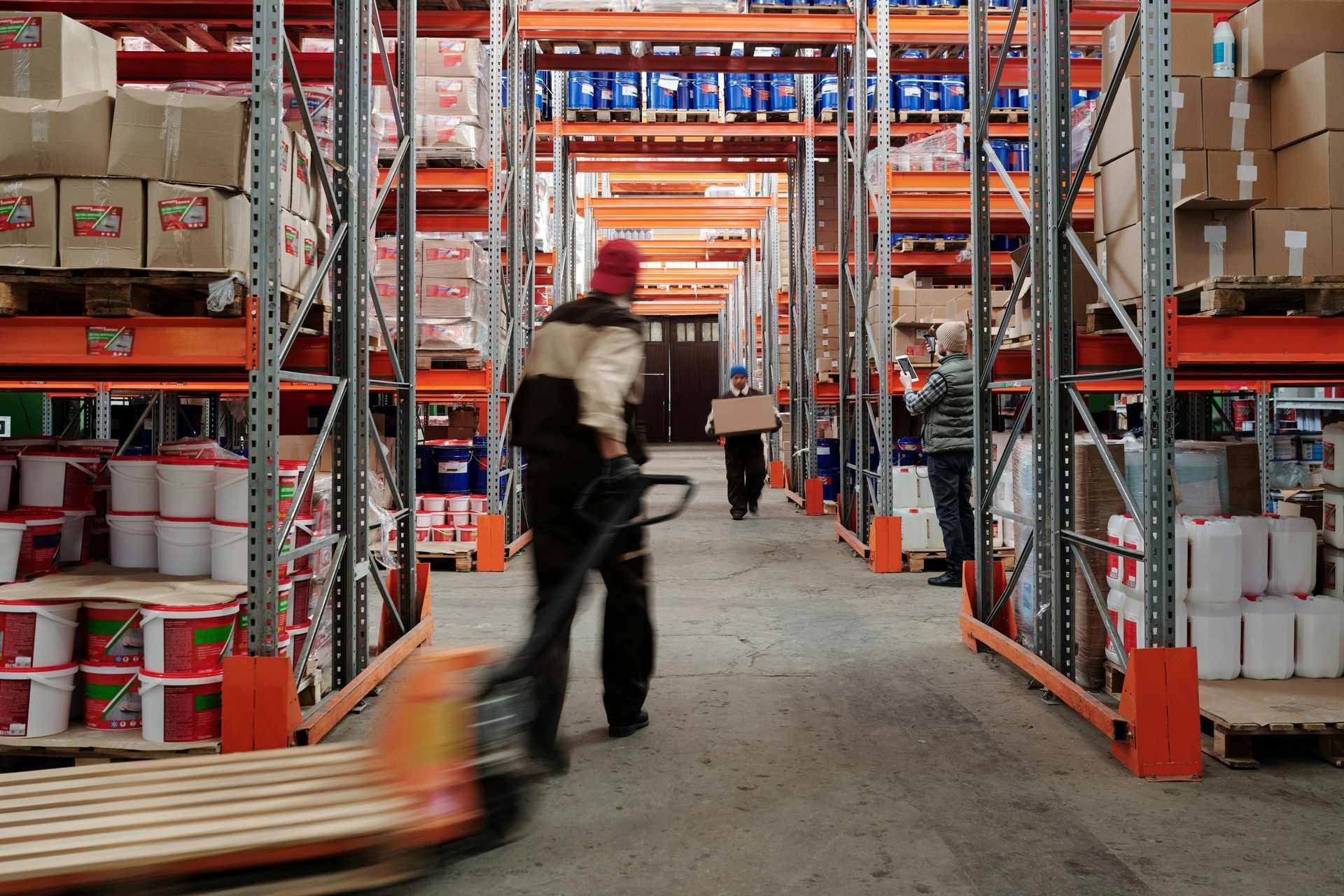Maximizing Efficiency: The Role of Less-than-Truckload (LTL) Logistics in Construction
In the fast-paced construction industry, managing logistics efficiently is crucial to keeping projects on track, staying within budget, and meeting client expectations. With the constant need for a steady supply of materials and equipment, construction companies often face a logistical challenge: how to deliver smaller quantities of materials cost-effectively without wasting resources or delaying the project timeline. This is where Less-than-Truckload (LTL) logistics comes into play.
LTL logistics offers a flexible, efficient solution for transporting smaller shipments that don’t require a full truckload. By consolidating multiple smaller shipments from different customers into one truck, LTL allows construction companies to transport only what they need, when they need it, without paying for unused space. This strategy can help reduce costs, improve efficiency, and provide greater flexibility in managing the flow of materials.
In this article, we’ll explore the role of LTL logistics in construction, the benefits it offers, and how construction companies can leverage LTL to maximize efficiency in their projects.
1. What is Less-than-Truckload (LTL) Logistics?
Less-than-Truckload (LTL) logistics is a shipping method that combines multiple smaller shipments from different companies into a single truckload. Unlike Full Truckload (FTL) shipping, where one shipment fills an entire truck, LTL shipments occupy only a portion of the truck’s capacity. This makes LTL an ideal solution for transporting smaller quantities of materials that do not require the full space of a truck, such as specialized equipment, tools, or incremental supplies.
LTL shipments are consolidated with other loads going in the same general direction, optimizing the truck’s capacity and reducing transportation costs for each individual shipper. Once the truck reaches its destination hub, shipments are separated and delivered to their respective final destinations.
In the construction industry, where material needs can vary day-to-day, LTL provides a cost-effective and flexible option for delivering the exact quantities needed without the expense of hiring a full truckload.
2. The Benefits of LTL Logistics for Construction Projects
Using LTL logistics in construction offers numerous advantages, particularly for projects that require frequent deliveries of smaller quantities of materials. Here are some of the key benefits:
Cost Savings
One of the primary advantages of LTL logistics is the ability to save money on transportation costs. Rather than paying for the entire capacity of a truck that may not be fully utilized, construction companies only pay for the portion of the truck they need. This makes LTL more economical for small to medium-sized shipments, especially when compared to the higher costs associated with Full Truckload (FTL) shipping for underutilized space.
Shared Costs:
Since multiple shipments share the same truck, the cost is divided among the various shippers, making transportation more affordable for everyone.
No Overpaying for Space: LTL allows you to ship only the materials you need without paying for unused space in the truck.
Increased Flexibility
Construction projects are dynamic and often require materials and equipment to be delivered in smaller, more frequent batches. LTL logistics provides the flexibility to adjust shipments as needed. Whether you need a specific type of material in a short time frame or want to stagger deliveries to align with project phases, LTL allows for more tailored scheduling.
How it helps:
Responsive to Project Needs: LTL enables you to get materials when you need them, reducing the need to stockpile resources on-site, which can lead to clutter and inefficiencies.
Adaptability:
Construction timelines can change, and LTL allows you to adjust shipments easily, ensuring you have the right amount of materials without overwhelming your site.
Reduced Inventory Management Challenges
In many construction projects, maintaining large inventories of materials on-site can be problematic. Excess inventory takes up space, increases the risk of damage or theft, and requires additional time and labor to manage. LTL logistics supports a Just-in-Time (JIT) delivery approach, where materials arrive exactly when they are needed, reducing the burden of on-site inventory management.
How it improves inventory management:
Less On-Site Clutter: By receiving smaller shipments more frequently, you reduce the need for on-site storage, making the workspace safer and more organized.
Minimized Waste and Losses: Receiving only what you need reduces the risk of materials being lost, damaged, or stolen while sitting unused on-site.
Environmental Benefits
LTL shipping is also a more sustainable option compared to traditional shipping methods. By consolidating multiple shipments into one truck, fewer vehicles are needed on the road, reducing fuel consumption and the associated carbon emissions. For construction companies looking to improve their environmental impact, LTL logistics offers a greener alternative to multiple individual shipments or half-full truckloads.
How it benefits the environment:
Fewer Trucks on the Road: Consolidating shipments reduces the number of trucks needed, cutting down on fuel consumption and greenhouse gas emissions.
Improved Sustainability Reputation: Adopting greener logistics practices can enhance your company’s reputation as a responsible and eco-conscious business, which is increasingly important to clients and stakeholders.
3. Improving Efficiency on Construction Sites with LTL
Incorporating LTL logistics into your construction operations can dramatically improve overall project efficiency. Here’s how LTL logistics can help streamline your workflow:
Just-in-Time Deliveries
LTL logistics supports the Just-in-Time (JIT) delivery model, where materials are delivered only when they are needed on-site. This eliminates the need for storing large quantities of materials on-site and helps reduce clutter, improve safety, and increase productivity. With LTL, you can schedule shipments to arrive as each phase of the project progresses, ensuring that workers have the materials they need, exactly when they need them.
Why it matters:
Avoids Delays: By having materials delivered on a JIT basis, workers are never left waiting for materials to arrive, reducing downtime and keeping the project on schedule.
Improves Productivity: With fewer materials to manage and sort through, workers can focus on their tasks, improving efficiency and reducing errors.
Optimized Delivery Scheduling
One of the challenges in construction is coordinating deliveries with the project timeline. With LTL logistics, you have greater control over delivery schedules, allowing you to optimize material flow to match project needs. This helps prevent bottlenecks, minimizes the risk of stockpiling materials too early, and ensures that everything runs smoothly.
Why it matters:
Aligned with Project Phases: LTL allows you to align deliveries with specific phases of the project, ensuring that materials arrive just as they are needed for the next phase of construction.
Reduced Traffic Congestion: Staggered deliveries reduce the likelihood of multiple trucks arriving simultaneously, preventing congestion and ensuring a smoother flow of materials onto the site.
Enhancing Communication and Coordination
Using LTL logistics can also enhance communication and coordination between the logistics provider, suppliers, and construction managers. Most LTL providers offer real-time tracking and updates, ensuring that all parties are aware of delivery timelines and can make adjustments if necessary.
Why it matters:
Real-Time Visibility: Knowing exactly when shipments will arrive allows construction managers to plan labor, resources, and equipment use more effectively.
Improved Coordination: LTL logistics ensure that everyone involved in the project—from suppliers to workers—can coordinate efforts more efficiently, leading to a more organized and predictable project flow.
4. Overcoming Common Challenges with LTL Logistics
While LTL logistics offers significant benefits, there are some challenges that need to be managed carefully to ensure success.
Here are common challenges and how to overcome them:
Potential for Longer Transit Times
Because LTL shipments are consolidated with other deliveries, the truck may make several stops before reaching its final destination. This can lead to longer transit times compared to FTL, which goes directly from origin to destination.
How to Overcome It:
To avoid delays, it’s important to work with an experienced LTL provider that offers optimized routing and efficient consolidation practices. Planning ahead and building flexibility into your delivery schedules can also help prevent last-minute issues.
Risk of Damage During Transit
LTL shipments are often handled multiple times during transit as they are loaded and unloaded at different stops, which can increase the risk of damage to sensitive materials.
How to Overcome It:
Proper packaging is key to preventing damage during transit. Ensure that materials are securely packaged and labeled, and work with an LTL provider that has a strong reputation for safe handling practices.
Coordination with Multiple Shippers
Since LTL involves multiple shippers, coordination and timing are critical. Miscommunication or delays from other shippers can affect your delivery.
How to Overcome It:
Choose a reliable LTL provider with a strong track record of meeting delivery windows and keeping communication clear between all parties. By maintaining consistent communication with your provider, you can mitigate risks and ensure timely deliveries.
5. When to Use LTL in Construction
While LTL logistics is highly versatile, it’s particularly effective for certain scenarios in construction projects, including:
- Smaller material shipments that don’t justify a full truckload.
- Frequent deliveries needed to align with different phases of the project.
- Specialized equipment or tools required at specific times.
- Just-in-Time (JIT) delivery strategies to minimize on-site storage and improve efficiency.
- For projects where material needs fluctuate or vary from one phase to the next, LTL provides a practical, cost-effective solution for transporting smaller, time-sensitive shipments.
Conclusion
Less-than-Truckload (LTL) logistics offers construction companies a flexible, cost-effective, and efficient way to manage smaller shipments of materials and equipment. By optimizing delivery schedules, supporting Just-in-Time (JIT) strategies, and reducing costs, LTL logistics helps construction companies improve project efficiency and reduce risks such as delays, clutter, and damage.
When used effectively, LTL can be a powerful tool to streamline the flow of materials to your construction site, keep your project on schedule, and ensure that you’re using resources as efficiently as possible. In an industry where time and precision are critical, incorporating LTL logistics into your overall strategy can help you achieve better results and increase client satisfaction.










All Rights Reserved | ASK Logistix